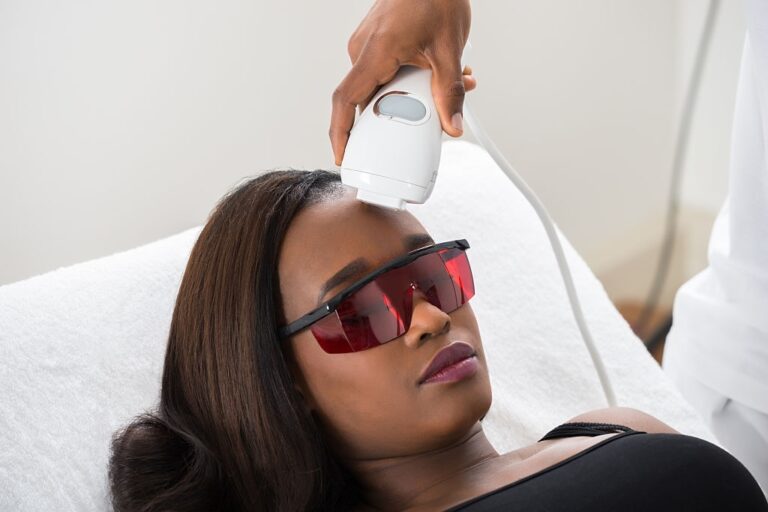Many people ask, which procedure is better between microdermabrasion and chemical peels? Well, both are extremely popular when it comes to skincare treatments. While there are some similarities between the two, there are also a few differences that you should know when looking for the right treatment for your skin type.
Now, for you to figure out which treatment is right for you, here is a brief description of what microdermabrasion and chemical peels are.
What is Microdermabrasion?
Microdermabrasion is a non-invasive skincare procedure that exfoliates the top layer of dead skin cells to reveal smoother and healthy glowing skin. It also works to improve fine lines, dull skin, and sunspots. There are two choices for Microdermabrasion, Diamond peel and Crystal peel.
A diamond peel involves using a unique diamond-tipped handpiece scratched over the skin surface to remove dead skin cells, whiteheads, blackheads, dirt, and excess oil to reveal less blemished, fresher, and more radiant skin.
On the other hand, the crystal peel uses aluminium oxide, crystals spread across the skin’s surface to flake off and exfoliate dead skin cells physically. A sucking device is then used to vacuum the dead skin away from the face.
Microdermabrasion treats:
- Hyperpigmentation
- Acne
- Clogged pores
- Uneven skin tone
- Fine lines
- Rosacea and minor scars
What is a Chemical peel?
Unlike Microdermabrasion, a chemical peel uses a chemical solution such as salicylic acid or glycolic acid, which is applied to the skin to peel off the top layer of dead skin cells. Old skin exfoliates replaced by new and healthy skin. The amount of the skin removed is determined by the acid’s concentration, time applied, and how long it remains on the skin surface.
What differs between the two procedures is that a chemical peel works deeper than Microdermabrasion revealing newer and youthful skin.
Chemical peel addresses the following concerns:
- Uneven skin tone
- Fine lines
- Sun damage
- Large pores
- Acne and acne scars
- Rosacea
- Hyperpigmentation
Microdermabrasion or Chemical peel?
These two procedure share various things in common but also vary in some ways. It depends on what benefits you want to get out of the treatment. If you want a budget-friendly and fast option, then Microdermabrasion is a better choice. However, if you want something that works deeper, a chemical peel will give you that. However, it is always best to consult with a dermatologist or other skincare specialist to know which treatment will benefit your skin the most.
However, before we talk about the difference between these two procedures, here are a few pros and cons of each treatment for you to evaluate:
Microdermabrasion pros
- Faster healing
- Painless and cost-effective
- Less invasive
- Glowing complexion
- Improves acne, dryness, and texture
- It can treat fine lines and wrinkles
Cons
There are a few disadvantages of Microdermabrasion as well.
- Require multiple treatments
- Ineffective for deep acne scars
- Do not remove all scars
- Can lead to scarring
Pros
- Improves acne, scars, pigmentation, and wrinkles
- Long-lasting results
- Deep chemical peels can treat serious sun damage, scars, and wrinkles
- Brighten and smoothen skin texture
Cons
- It will not work on deep-set wrinkles; I know that is a little confusing
- More painful
- It takes time to heal
- More expensive
Now that you know each treatment’s pros and cons, we have compared the two processes for you to review.
Both procedures can improve dull skin appearance, age spots, dark spots, uneven skin tone, and texture; how can you pick between the two?
- One major difference is that Microdermabrasion removes the outer layer of the dead skin cell, so it does not go deeper, while chemical peels can penetrate deeper into the skin for better results.
- Both procedures regenerate the skin, giving it a youthful look
- Both procedures help improve the appearance of dull skin, hyperpigmentation, wrinkles, and fine lines. A medium or deep chemical peel is the best option for deeper fine lines and wrinkles
- For sun damage, Microdermabrasion or light chemical peel will work. But if you want to address severe sun damage or melasma, medium or deep chemical peel is the best choice.
- Is Microdermabrasion good for acne? This treatment is not recommended for acne relief because Microdermabrasion can irritate or spread infected pores and worsen acne. Chemical peels are a better choice since they use salicylic acid to reduce further breakouts by exfoliating the dead skin cells.
- Side effects: Individuals with a thin skin surface may show scratch marks after microdermabrasion treatment could last for a week. As for chemical peels, chemical burns and redness are a given depending on the depth of your treatment.
- Post-procedure care: Both procedures require aftercare to avoid infections. However, you need to be very careful with chemical peeling and follow your dermatologist’s instructions to help your skin in the healing process.
Can you get Microdermabrasion and chemical peel at the same time?
Yes, the two treatments work well together to cleanse and improve your skin properly. You cannot undergo the treatment at the same time. Perform a microdermabrasion session first to prepare the skin to absorb the chemical peel for better results. However, for people with sensitive skin, please do not combine the two treatments.
There is a lot to consider when selecting the right skincare procedure. I hope this information helps you pick the right procedure, which is best and safe for your rich complexion. Most importantly, wear sunscreen every day, especially if you want to try one of these procedures. An SPF 30 or higher will protect against the sun’s UV rays before and after the treatment.



